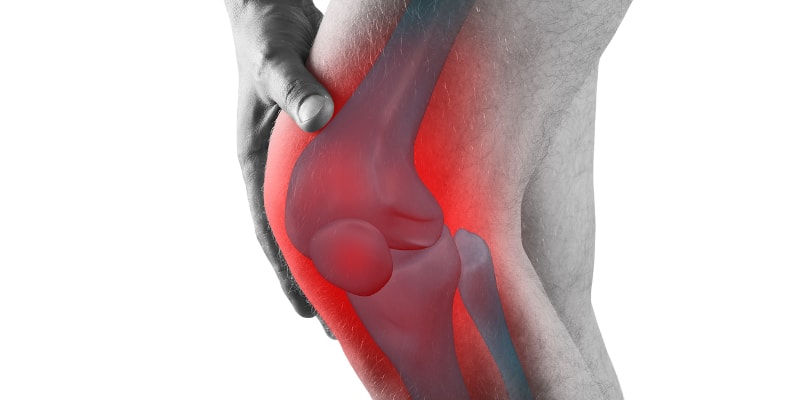
I write this since almost half of the new clients that come in to begin training report having some degree of knee pain. For most, it isn’t debilitating but they mention it when I am gathering client history about previous injuries or problems that might be an issue with regard to their training. Some people have had previous knee injuries that continue to plague them long after they have “healed,” but even those with no history of an acute injury seemed to just accept the fact that having achy knees is just a fact of life. Over time I have learned there are certain reasons that cause people’s knees to hurt. I have also learned that, through proper strength training, the vast majority of people’s achy knees will improve.
Stretches For Knee Pain
To jump the shark and get right to the point – the simplest, most effective fix I have found for achy knees is to squat. As simple as that sounds – it’s true, and I’ve seen it work over and over again. Most people tell me they have been told or have heard it rumored that squatting was bad for their knees. It is my contention this is simply not true. Squatting is a natural human movement that is part of daily life for all normally functioning people. Of course, I must add that it is imperative that you squat correctly in order to derive the full benefit and avoid aggravating what may already be a painful set of joints. To be clear – squatting poorly may cause injury. Poor technique is no guarantee that something will go wrong – but it’s like speeding in your car. Speeding doesn’t guarantee you’ll get a ticket or have an accident, but it does up the odds that those things may happen. Squatting incorrectly doesn’t guarantee an injury, but It may cause some unnecessary wear and tear that may take a toll on your knees over time. There are then some fundamentals that make for an anatomically sound squat. Virtually no one comes in knowing these things, and few people exhibit proper squatting mechanics when they first begin training with me. Once they have been instructed on proper technique, I haven’t had a single person that has not been able to squat regularly, with most being able to add load to the movement and dramatically improve their strength over time.

Benefits of Squats for Knee Pain
Over more than 20 years of coaching, I have taught over 1000 people how to squat. For most of my clients who complained of achy knees – once I’d seen them squat with no prior instruction from me, it was obvious why they were having pain. They often had horrendous body-mechanics. Most of those clients also reported less pain or no pain after learning proper execution – many times even within that same training session. For those clients who had a significant knee injury like an ACL tear and/or other ligament damage, their knee pain was eliminated after following a couple of months of a regimen geared toward gaining strength in the back squat – specifically the low bar back squat and/or box squat. The cause, as I would learn for knee pain, was often related to weak hips that also often had poor mobility. The fix for achy knees then, it seemed, was to strengthen the hips. Strong hips in turn lend themselves to more stable knees. Proper low-bar squat technique primarily addresses hip strength while diminishing the stress on the knees that other methods of squatting may be more likely to induce.
Through experience, research, and practice, I’ve come to the conclusion that squatting is not only safe but necessary in order to have a healthy back, hips and knees. After over 30 years of squatting and over 20 years of teaching, I have seen the squat be an incredible tool for both gaining strength and rehabilitation of injuries. I must add that there are a dozen or more distinctly different methods to perform a squat. There are a few that I find are particularly therapeutic – namely the low-bar squat and the wide-stance box squat. It is also my experience that some of the variations do produce different forces on the knee than others, and some people who can tolerate a low bar squat may not tolerate an Olympic style squat. If you have knee pain, I hope this information may be useful to you in considering what may help alleviate your pain from achy knees. Consult with your doctor before attempting to treat any condition on your own. You may find they would agree that getting stronger may be good for your health!


